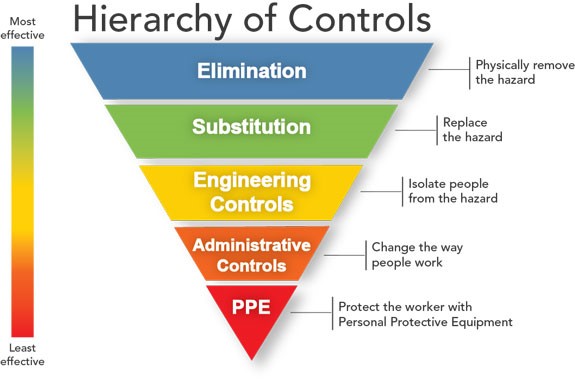All good safety professionals know to pursue the hierarchy of controls when eliminating or reducing exposure to safety hazards. The same hierarchy can be applied to managing and controlling the risk factors which cause musculoskeletal disorders (MSDs). The proof and effectiveness has been demonstrated in several recently-published studies.
It is interesting to note that there is not just one model for the hierarchy of controls for safety. In our review of background on the model, we found that different agencies and authors each have their own twist and variations of the model. The one common theme is that all of them pursue this same order.
- Engineering controls – change the physical setup of the workplace and job
- Administrative controls – change how the work is performed or scheduled
- Other approaches – job matching, wellness and stretching, use of body mechanics
Having valid studies which prove the effectiveness and impact of engineering controls (a.k.a. ergonomics) and administrative controls provide you with proof that can help you justify investment of monies and time. We have found this information helpful when asked by leadership, “Instead of buying a lifting device can’t we just train people to lift correctly or with a buddy?” To paraphrase Agent Mulder from The X-Files television show, “The truth is out there.”
For additional information and the studies backing this, check out VelocityEHS’ position statement on Hierarchy of Controls for Musculoskeletal Disorders
